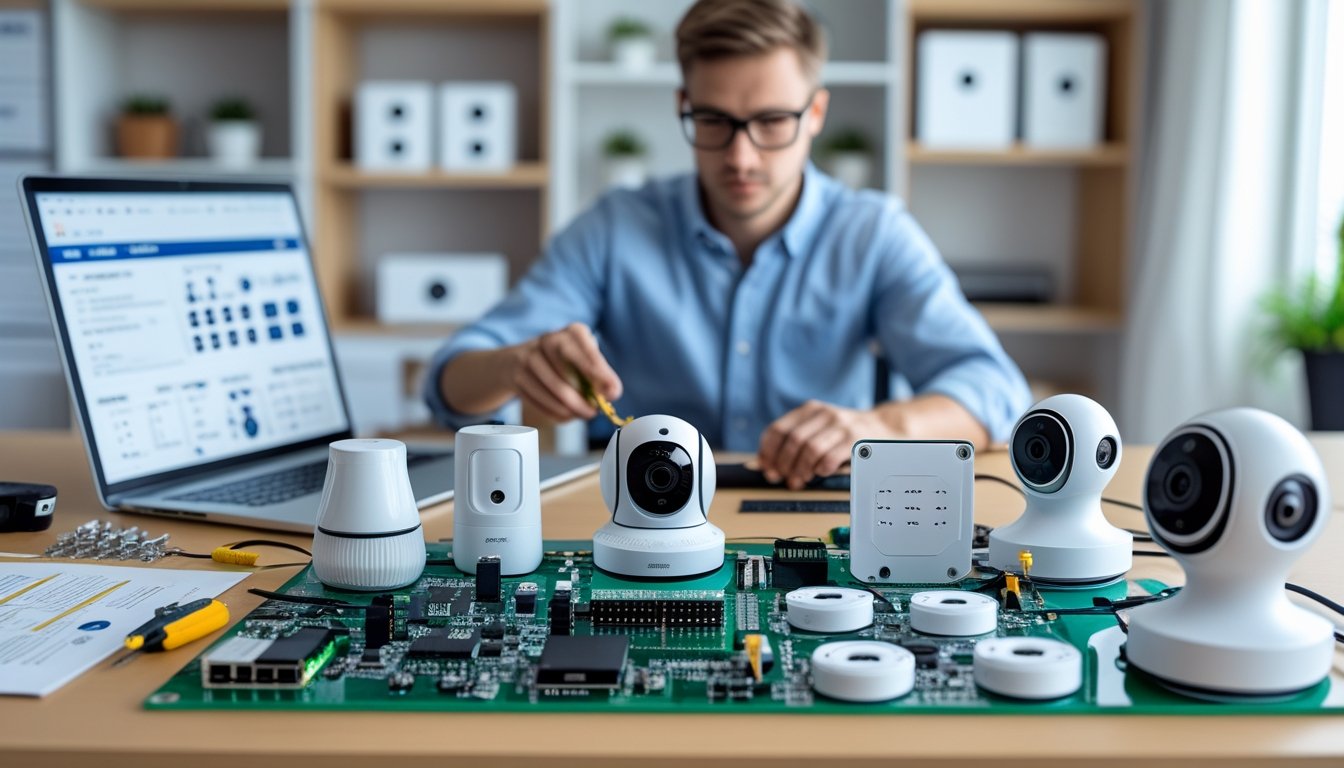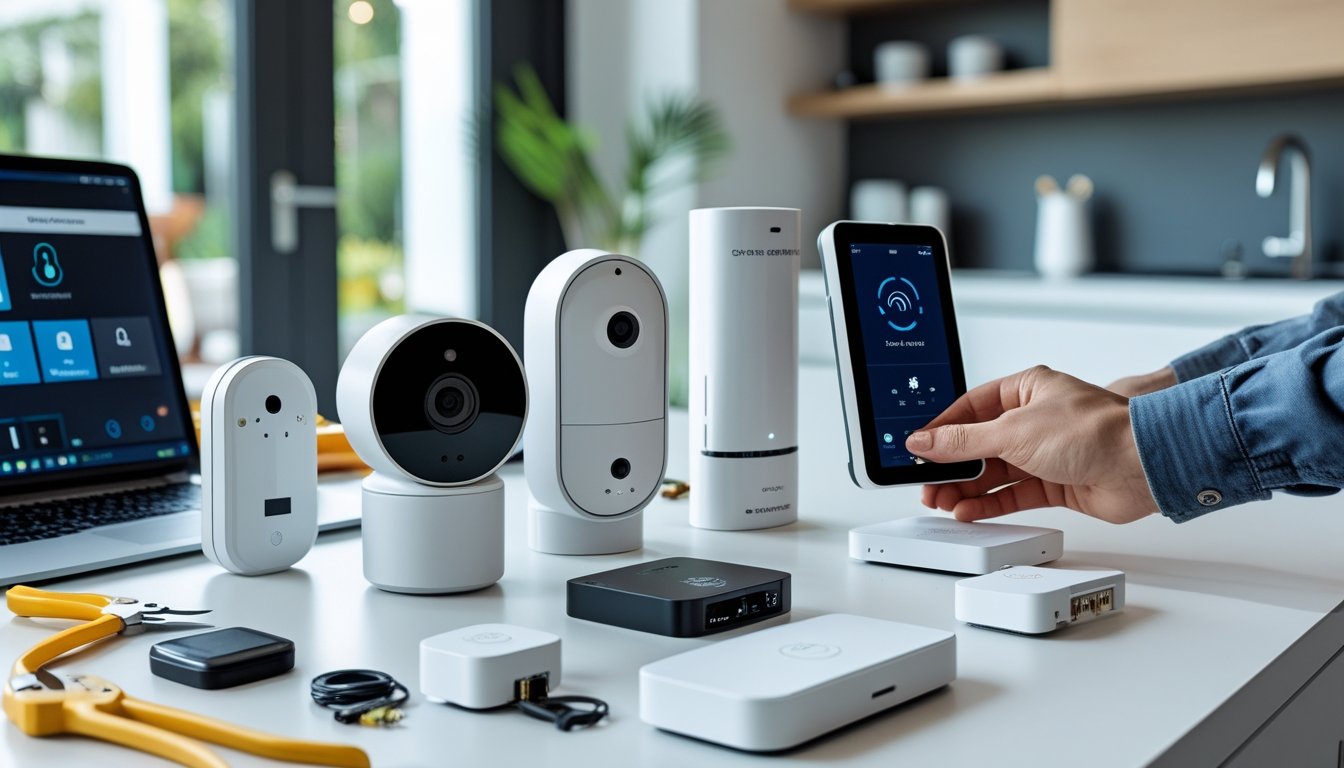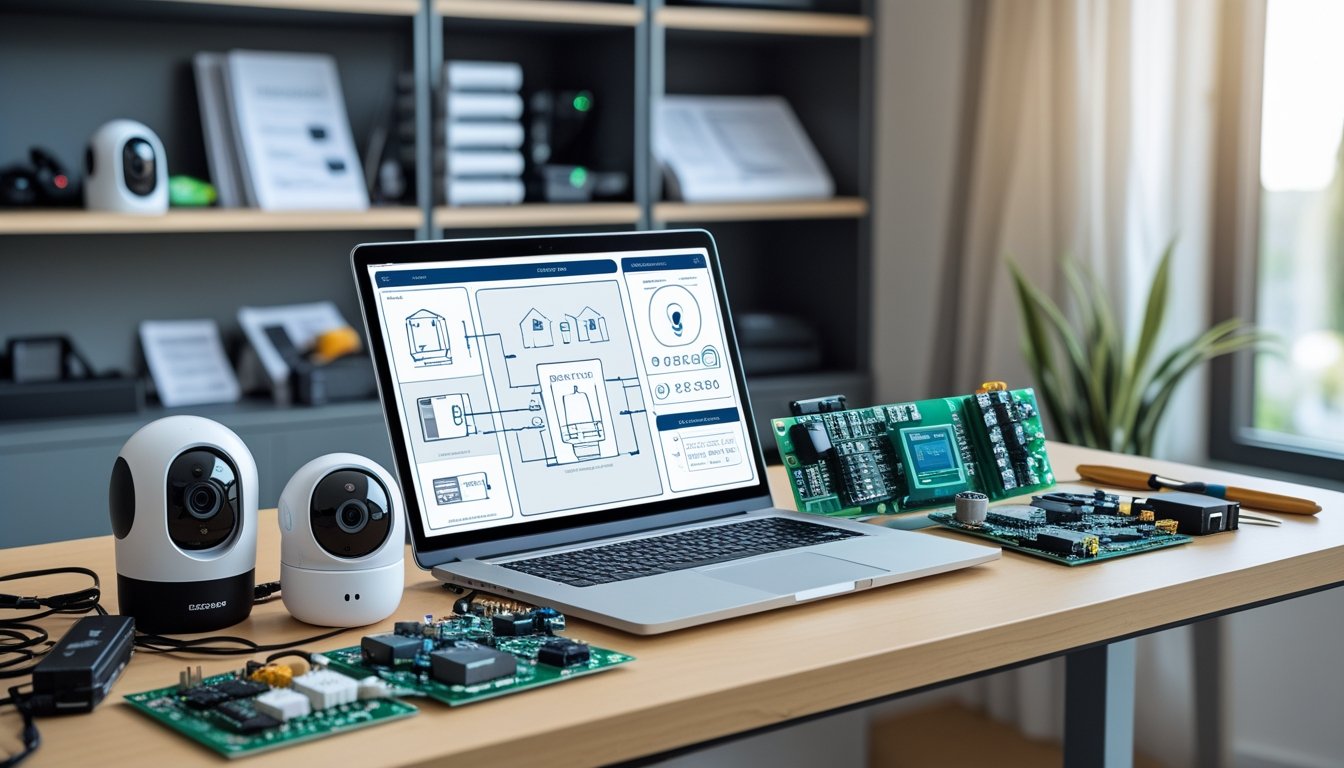Late updated: 05 Sep 2025 15:09
Written by: Elena Prescott
Exploring Advanced DIY Security Solutions: Safeguard Your Home with Innovation
The landscape of home security is undergoing a significant transformation, and it's all thanks to the rise of advanced DIY solutions. Today, we have the ability to customise and install sophisticated systems that were once reserved for professionals. These advanced DIY security solutions empower homeowners to secure their spaces with high-tech features while enjoying substantial cost savings.

As we delve deeper into these solutions, the emphasis is on innovation. Features such as smart connectivity allow us to monitor and control systems remotely through our smartphones, giving us peace of mind wherever we are. The integration of smart locks, video doorbells, and motion sensors turns any home into a fortress, providing both safety and convenience.
The value of such systems lies not only in their functionality but also in their adaptability. Every household has unique security needs, and the ability to tailor a system to fit those needs without hiring experts is revolutionary. Let's explore how these remarkable technologies work and how they can offer us unprecedented control over our home security.
Key Takeaways
- Advanced DIY security allows customisation and cost savings.
- Smart features enable remote monitoring and control.
- Tailoring systems to household needs enhances security efficacy.
Essential Components of Advanced DIY Security Solutions

As we explore advanced DIY security solutions, several key components stand out. Robust home security options, comprehensive camera coverage, motion sensors, and environmental detectors each play a crucial role. Furthermore, alarms provide immediate alerts, enhancing overall safety.
Choosing Robust DIY Home Security Systems
When selecting a DIY home security system, we should focus on customisability and ease of installation. A robust system often includes central control panels, smart locks, and integrated mobile apps for remote management. Many opt for systems featuring wireless setups, as they are easier to install and can be adjusted according to our home layout.
Compatibility with smart home devices is a key factor, allowing for seamless integration with existing technology. We must also consider the longevity and reliability of each component to ensure consistent performance. A highly adaptable system can accommodate changes in our security needs over time.
Integrating Security Cameras for Comprehensive Coverage
Security cameras are indispensable for effective surveillance. When integrating cameras into our DIY security setup, we prioritise coverage and resolution. High-definition cameras provide clear images, essential for identifying potential threats. Placement is critical—covering entry points, driveways, and common areas ensures comprehensive protection.
For enhanced accessibility, many systems offer online portals or apps for real-time viewing. Pan-tilt-zoom (PTZ) features add flexibility, allowing us to adjust views remotely. Night vision capabilities ensure security isn't compromised in low light. Selecting weatherproof cameras with robust construction is vital to withstanding environmental conditions.
Enhanced Protection with Motion Sensors and Environmental Detectors
Motion sensors and environmental detectors contribute to layered security. By detecting movement within defined zones, motion sensors provide real-time alerts to our mobile devices. Strategic placement near entry points and sensitive areas enhances their effectiveness.
In addition to motion sensors, installing detectors for smoke, carbon monoxide and water leaks offers comprehensive protection. Such detectors alert us to changes in our environment, allowing timely intervention. Customisable sensitivity settings minimise false alarms and improve reliability. Integrated detection systems can trigger alarms, amplifying our response mechanism.
Selecting and Installing Alarms for Immediate Response
Alarms serve as the frontline defence, deterring intruders and alerting us to emergencies. When selecting an alarm, we focus on the decibel level and response capabilities. Loud alarms not only signal intrusions but often deter further attempts. Wireless alarms offer greater flexibility and are easier to integrate within our DIY system.
Installation should ensure alarms are noticeable and hard to temper with. Linked alarms, when triggered, can activate other security measures such as lights or cameras, creating a comprehensive response. Integrated systems often provide notifications through our smartphones, allowing us to take immediate action regardless of our location.
Smart Features, Connectivity, and Secure Remote Access
Exploring advanced DIY security solutions opens up a world of possibilities. These systems incorporate smart locks and lighting, enable remote monitoring with motion detection, and integrate seamlessly with smart home devices like Alexa and Google Assistant. Ensuring secure remote access through robust cyber security measures is essential.
Incorporating Smart Locks and Smart Lighting
Smart locks are an essential component of modern DIY security systems. They offer keyless entry and can be controlled remotely via smartphone apps. This allows us to grant access to visitors even when we're away. Smart lighting complements this by simulating occupancy. Automated lighting schedules or randomised patterns help deter intruders.
Additionally, smart lighting systems can integrate with sensors for triggered responses, such as turning lights on in response to detected motion. Smart lighting thus plays a dual role in both security and convenience, enhancing the overall safety of our homes.
Remote Monitoring and Motion Detection Capabilities
Remote monitoring provides real-time access to security feeds from our smartphones. This capability ensures that we're never truly 'away' from home, empowering us to respond to alerts promptly. Motion detection technologies are pivotal in this respect. They enable cameras and sensors to record events when motion is detected, reducing unnecessary footage.
We can get real-time alerts when movement is detected, helping us take immediate action. Some systems offer advanced motion detection features, like distinguishing between pets and potential intruders, reducing false alarms. By leveraging these tools, we elevate our security measures, maintaining constant vigilance over our homes.
Smart Home Integration: Alexa, Google Assistant, and Connected Devices
Integration with smart home assistants like Alexa and Google Assistant enhances the functionality of DIY security systems. Through voice commands, we can arm or disarm systems, check camera feeds, or control smart locks and lighting. This integration forms a cohesive network of devices that work in harmony.
Connecting various smart devices streamlines home control and increases security. Not only does this setup simplify tasks, but it also provides a centralised system that can adapt to our unique needs. This level of integration makes managing a DIY security system both accessible and efficient for the modern homeowner.
Strengthening Cyber Security in DIY Home Security Networks
Security doesn't stop at physical devices; it extends into the digital realm. Implementing strong cyber security measures is non-negotiable. Two-factor authentication adds an extra layer of protection to our systems, ensuring that even if passwords are compromised, unauthorised access is prevented.
Network encryption safeguards the data transmitted to and from our devices. Regular firmware updates are crucial to fixing vulnerabilities and enhancing security features. By ensuring these updates are consistently applied, we protect our network from emerging threats. In an interconnected world, robust cyber security practices protect our privacy and reinforce the integrity of our DIY security systems.
Frequently Asked Questions

As we explore advanced DIY security solutions, there are several common queries that arise. These include considerations for system choice, installation without monthly fees, and integration of systems like Ring.
What are the top-rated DIY home security systems currently on the market?
The market offers a variety of top-rated DIY home security systems. Based on recent evaluations, some of the best options provide professional-grade protection without requiring professional installation. Their setup is straightforward, allowing homeowners to manage their security independently.
How can I install a DIY home security system without incurring monthly fees?
It's possible to set up a DIY security system and avoid monthly fees by choosing devices without subscriptions, utilising self-monitoring, and leveraging smart technology for alerts. Opt for models that offer free app-based management so you can maintain full control without added costs.
What features should I look for when choosing the best DIY home security camera system?
When selecting a DIY home security camera system, prioritise high-resolution video, night vision, and motion detection. Consider compatibility with smart home devices for seamless integration and assess cloud storage options versus local storage to ensure your footage is securely managed.
How does a DIY security system compare to professionally installed options like SimpliSafe?
DIY systems offer more flexibility and lower costs compared to professionally installed options like SimpliSafe, which typically include installation fees and monthly monitoring charges. However, DIY systems may lack some of the premium features and support that come with professional packages.
Can a Ring security system be effectively integrated into a comprehensive DIY home security setup?
Yes, a Ring security system can easily integrate into a broader DIY setup. It works well with other Ring devices and compatible smart home products, allowing you to create a cohesive, comprehensive security network that enhances your home’s protection.
What are the potential drawbacks of self-monitored home security systems?
Self-monitored systems place the onus on homeowners to respond to alerts, which can be a drawback if you’re frequently unavailable. Additionally, these systems may not provide the same level of deterrence or immediate response offered by professionally monitored systems, potentially impacting overall efficacy.
